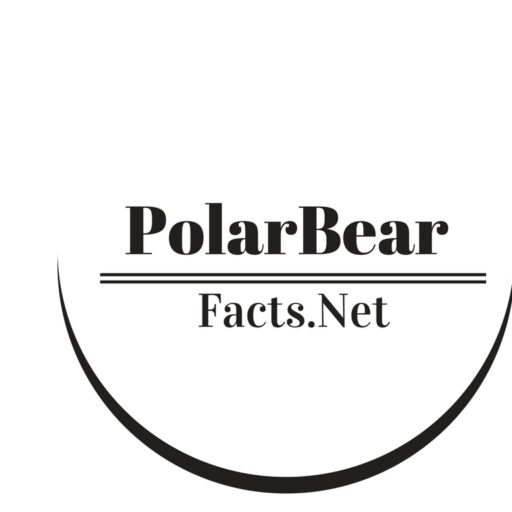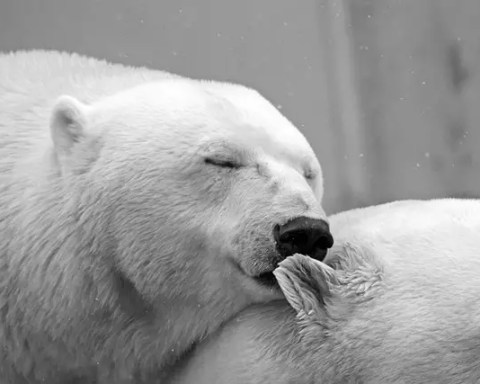Scientists weren’t able to explain history of polar bear’s teeth until in 2004 when they discovered 130,000 – 110,000-year-old polar bear jaw bone. This was the oldest jaw bone and its discovery answered many questions and solved numerous puzzles on the skull anatomy of a polar bear. The fossil was found on Prince Charles Foreland. Fossil studies suggest that the polar bear’s molar teeth transformed into a new form around 10,000 – 20,000 years ago and the shape was entirely different from those of brown bear’s teeth. Before that time polar bears and brown bears shared similar teeth characteristics. The arctic bears separated from their brown cousins during the Pleistocene period probably in the eastern Siberia.
Polar Bears possess typical carnivorous heterodont dentition. Heterodont dentition explains much about the polar bear’s feeding behavior. It is an anatomical explanation of teeth which means that the animal possess more than one tooth morphology. They have teeth of different lengths and shapes. Perhaps you’d love all these interesting polar bear teeth facts.
Polar Bear Teeth – Do Polar Bears have Sharp Teeth?
- The polar bear’s teeth are classified into three categories namely; incisors, canines, and cheek teeth (molars and premolars). While larger teeth such as incisors and canines are fixed rostrally the molars and premolars are set caudally inside the mouth.
- There is a long gap between the functional canine and molariform teeth. Inside the gap lie the first premolars which are vestigial.
- Thanks to this big gap that allows the bear to pierce into the thick bodies of seals and more importantly without facing any interference from the cheek teeth. Unlike in brown bears the cheek teeth in polar bears are significantly reduced in size and also the carnassials are more pronounced in white bears than in brown bears.
- These carnassials truly reflect the predatory lifestyle of an arctic bear. Their teeth are perfect to grab the prey and tear it apart.
- Brown bear’s teeth are well adapted to grinding grasses whereas polar bear’s teeth definitely serve no such purpose. While male polar bears possess larger and heavier canines than those of females the molar arcade is same in both sexes.
- The ratio of condylobasal length to zygomatic width (L/W) is 1.59 in brown bears but in polar bears the ratio is 1.63. If we look at the canines the difference appears to be greater than the actual measurements.
- The incisors are attached to the premaxillary bone. The premaxillary bone is attached to the upper jaw of an animal bearing teeth. However canines lie in the maxilla which is quite adjacent to premaxilla.
- While molar teeth are flat and are mainly used in chewing, the canines, premolars, and incisors are primary or deciduous teeth. The molars grow from maxillae whereas the premolars sprout from the maxillary bones.
- Polar bears’ teeth serve different functions and none of them resembles the other. This can truly be troublesome provided the bear loses tooth in fight. If one of the teeth is broken then it probably affects the dietary habits of a polar bear.
- Polar bear’s primary teeth appear to replace vertically and once in a lifetime. This means that if a polar bear loses her deciduous teeth the second time then it must learn to live without deciduous teeth.
Read More: How Much Do Polar Bears Eat?
Functions of Polar Bear Teeth
- Incisors are primarily used either for slicing or for chipping food. The bear can also use (pointed) incisors for cutting thick skin of a seal.
- The cheek teeth are equally effective in that they help they facilitate in crushing and grinding the food before the molars chew it.
- Several characteristic features of a skull make up the carnivoran adaptation of a polar bear. The powerful temporal muscles and fossae are used to rip the flesh and also for killing the prey. These muscles also play a part when the bear holds the prey temporarily. Polar bear however cannot divide the flesh inside her mouth with these muscles. The temporal muscles are only used to tear prey.
- The polar bear’s jaw movement has a limited horizontal motion in fact they are not able to move the upper and lower jaws on sideways. They can have a smooth vertical movement though. Polar bears have shallow mandibular fossae which resembles like that of a dog. They are thought to possess much pronounced dentary as compared to other marine mammals.
How Do Polar Bears Swallow Food?
Read More: What Do Polar Bears Eat?
Polar bears are more likely to swallow food than they chew. The jaw muscles act in coordination with each other to pass the food via oral cavity through the larynx. The bones of the head likely facilitate in swallowing process. The hyoid apparatus which holds the larynx in place supports the tongue is extremely significant while swallowing and feeding. Muscles that will move the hyoid apparatus up and down occur in between basihyal and tongue.
How Many Teeth Does a Polar Bear have?
Polar bears are arguably the most carnivorans in the bear family. The only characteristic adaptation that makes icy bears the most carnivorous is their sharp teeth. The polar bear has 42 teeth in total with the cheek teeth appear to be more pointed than in the brown bears. Besides the bear’s canines are not only sharper but also greater in size than in brown bears.
These large canines describe the exclusive meat-eating ability of a bear more than any other teeth. Polar bears have dental formula of 3.1.4.23.1.4.3 which they share with all other Ursids.
Polar Bear Teeth – Video
- POLAR BEAR FEATURES: Polar bears are primarily known for their acute sense of smell. Thanks to its sharp nose with the help of which the bear is able to smell its primary prey (ringed seal) hidden 2 feet under the snow…
- POLAR BEAR SKULL:The polar bear’s skull is a typical of any other land carnivores. Bears unlike other carnivores have relatively deep and flattened mandibular fossa. The mandibular fossa is called jaw hinge…
- POLAR BEAR TAXONOMY: Constantine J. Phipps in 1774 was the first one to give polar bears a scientific name Ursus maritimus. Two years later Pallas came up with his scientific name Ursus marinus…



